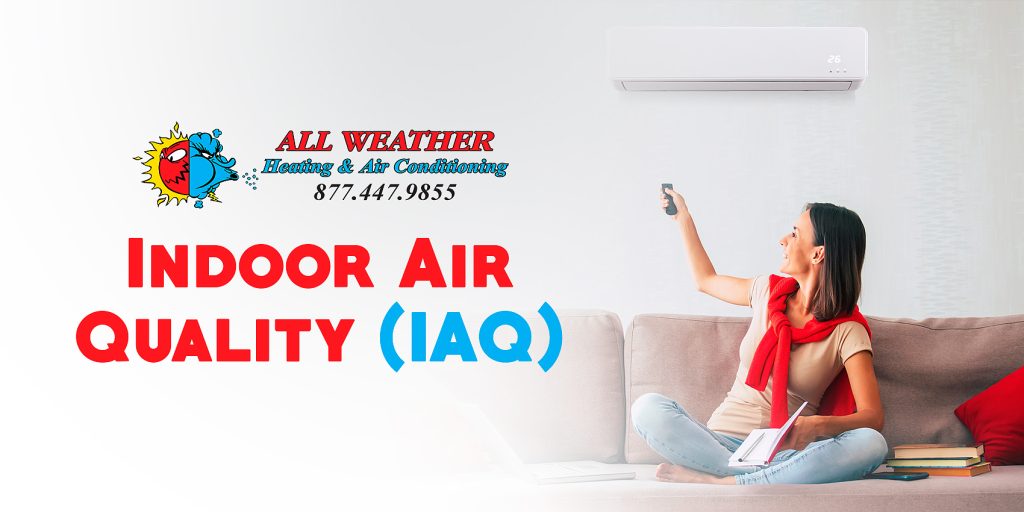
Indoor air quality, or IAQ, is the quality of air within indoor spaces. It is typically perceived as odor, taste, and air quality. It affects people’s perceptions of space and can impact productivity.
With increasing awareness about air quality, people are looking at ways to improve indoor air quality at home and in offices. This blog discusses the causes of poor indoor air quality, steps to improve indoor air quality, common pollutants in indoor air, tips for maintaining good indoor air quality, strategies for healthy indoor environments, government regulations on indoor air quality, and resources for improving indoor air quality.
What is IAQ?
Indoor air quality (IAQ) refers to the air quality within and around buildings and other structures, especially as it relates to the health and comfort of building occupants. Poor indoor air quality can lead to a variety of health issues, such as headaches, fatigue, respiratory irritations, and in rare cases, more serious health issues like carbon monoxide poisoning. Due to the wide range of health concerns surrounding poor indoor air quality, it is important for building managers and owners to ensure that indoor air quality is maintained at optimal levels.
The first step in improving indoor air quality is to identify the sources of poor air quality. Common sources include mold growth, dust mites, household pets, and smoking materials. Once these sources are identified, building managers must take action to prevent or eliminate those factors from indoor air.
Building codes are one way building managers can ensure high indoor air quality. Building codes require buildings to be designed and operated in a manner that ensures healthy indoor environments for building occupants.
By following building codes and taking action to improve indoor air quality, building managers can help build healthier environments for their communities.
Causes of Poor IAQ
Poor indoor air quality (IAQ) can be caused by a number of factors, including poor ventilation, contaminants in the building environment, and building modifications. Poor ventilation can occur when there is limited access to fresh air, such as during bad weather or when the building is sealed tightly.
During construction, materials such as glues, fiberglass, particle boards, paints, and chemicals can increase IAQ problems. Building modifications can also influence indoor air quality. For example, recent remodeling or other activities in or near a building may decrease fresh air intake and lead to IAQ issues.
Another cause of poor IAQ is exposure to certain substances. In particular, asbestos and radon are two harmful environmental contaminants that people can become exposed to over time. Both substances can cause serious health issues if they are inhaled for too long.
Steps to Improve IAQ
Maintaining indoor air quality (IAQ) for healthy living is vital. Here are some steps you can take to improve IAQ and improve your health and well-being.
– Maintain proper maintenance of heating and ventilation systems by checking the air filters, air ducts, fans, and heating and air conditioning systems regularly or when problems arise
– Avoid contamination from construction materials, glues, fiberglass, particle boards, paints, and chemicals as much as possible
– Reduce the number of building occupants and time spent indoors
– Utilize air cleaners and filters to maintain acceptable air quality
– Take prompt action to address water-related issues and maintain sanitation
This way, you can create a healthy environment for yourself and your family.
Common Pollutants in Indoor Air
Indoor air pollution is caused by a wide variety of indoor sources, including outdoor pollution, indoor pollutants, and sources unique to the environment. Common indoor air pollutants include pet dander, mold spores, dust mites, insect parts, asbestos fibers, lead particles, ozone, carbon dioxide, volatile organic compounds (VOCs), and more.
The indoor environment can also be affected by asthma triggers such as mold and other allergens. These pollutants can cause health problems such as respiratory irritation and asthma symptoms.
Additionally, outdoor air pollution can enter your home through door and window leaks, open flames, or smoking indoors. This pollution can contribute to health problems such as asthma exacerbation or heart disease.
Tips for Maintaining Good IAQ
You can ensure the ventilation system is operating correctly and efficiently by following the guidelines provided in the ASHRAE Standard 62.1 Ventilation for Acceptable Indoor Air Quality. The key to maintaining good indoor air quality is to keep the building and surrounding area clean and free from contaminants. This includes removing smoke, dust, and other particulates from the building environment and avoiding sources of indoor pollution such as mold, pets, and smoking. It also means keeping windows and doors shut when not in use to prevent cross-contamination of indoor air with fresh air.
In addition, you can monitor humidity levels and keep them at a comfortable level by using evaporative or dehumidifying devices as needed. You can also regularly inspect the building for any water-related issues and address them quickly. Finally, follow ASHRAE Standard 62.1 Ventilation for Acceptable Indoor Air Quality and other acceptable standards to ensure healthy indoor air quality for everyone in your building or environment.
Strategies for Healthy Indoor Environments
Switching to a clean and healthy indoor environment is one of the best ways to reduce air pollution and improve health. Improving indoor air quality can be achieved by installing heat pumps, air filters, and ventilation systems. These strategies help to reduce indoor air pollution, air quality, and air pollution health risks.
A healthy indoor environment can help people to stay healthy, feel energetic, and perform better physically and mentally. In addition, building improvements such as energy efficiency, carbon dioxide removal (carbon dioxide scrubbing), building improvement (e.g., insulation), and gains in indoor air quality can help create a healthier indoor environment.
Maintaining indoor air quality requires an integrated approach to cleaning and maintaining surfaces to reduce the risks from hazardous pollutants. It is essential to ensure that strategies for healthy indoor environments are delivered equitably across society.
By using the physical and biological sciences principles to solve indoor air quality problems, we can create a healthier environment for all of us.
Government Regulations on IAQ
Government regulations on indoor air quality (IAQ) are based on the American Society of Heating, Refrigerating and Air Conditioning Engineers (ASHRAE) Standard 62.1 Ventilation for Acceptable Indoor Air Quality.
The standard outlines how properly designed ventilation systems can help to maintain indoor air quality in homes, offices, schools, hospitals, fitness centers, and other indoor environments.
Maintaining acceptable air quality requires building staff and occupants to take appropriate measures to ensure indoor air quality is maintained.
For example, Canada’s building codes and health and safety legislation generally refers to a version of the ASHRAE Standard 62.1.
Building staff must implement proper ventilation systems that are sized appropriately for the building’s air-handling capacity and environmental conditions.
Additionally, they must monitor indoor air quality and take action if it becomes unhealthy.
By following these guidelines, building staff and occupants can help ensure healthy indoor air quality for everyone using their facilities.
In addition to governmental regulations on IAQ, there are many factors affecting the quality of indoor air indoors, such as building materials and furnishings, paints used indoors, chemicals used outdoors, outdoor pollution levels, carbon dioxide levels from burning fossil fuels, humidity levels in indoor spaces, and contaminants found in indoor air such as tobacco smoke or mold.
It’s important for building owners and operators to develop an action plan for improving indoor air quality that addresses all of these factors.
Resources for Improving IAQ
With indoor air quality (IAQ), it is important for building staff and occupants to take action to maintain good indoor air quality.
Utilizing IAQ best practices for design, construction, and commissioning can help optimize the indoor environment. For example, proper ventilation and air conditioning systems help outdoor air intake while maintaining sanitation and allowing for sufficient outdoor air can improve indoor air quality. Maintaining heating and ventilation systems correctly helps to remove contaminants from the indoor environment. Improperly maintained heating and ventilation systems should be addressed quickly to ensure good IAQ.
Employers also need to be aware of potential contaminants such as chemicals, gases, vapors, dust, molds, fungi, bacteria, odors, etc. By taking action to ensure good indoor air quality in buildings, everyone can enjoy a healthy and clean indoor environment by ensuring good indoor air quality in buildings.
Conclusion
The indoor environment is a direct reflection of our quality of living. It is essential to understand the factors that affect indoor air quality so that we can improve air quality and prevent various health issues caused by indoor pollutants. These factors include indoor pollution, poor ventilation, moisture, and mold, as well as dust, smoke, and unwanted contaminants from building materials. While some people are more sensitive to pollutants than others, everyone can benefit from following the steps mentioned above to ensure good indoor air quality. Get in touch with us at this time if you would like to learn more about improving indoor air quality or want expert consultation on this topic.

